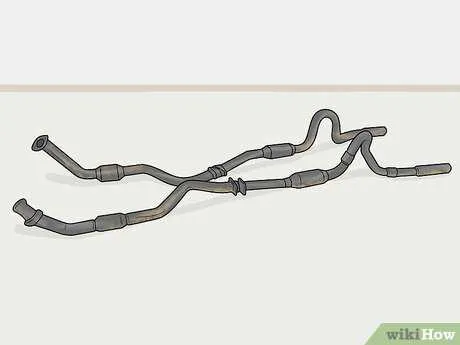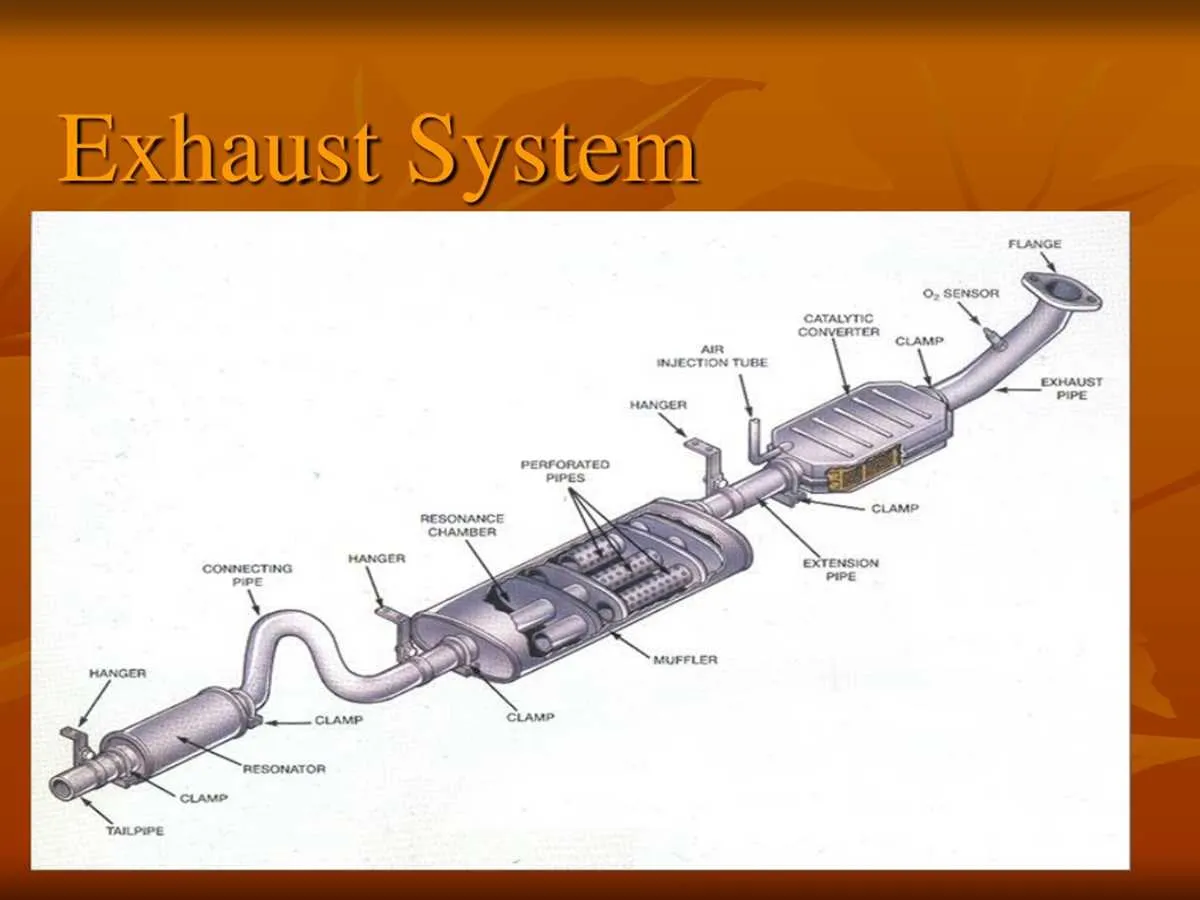
Begin with inspecting the manifold, where combustion gases are first collected. Cracks or leaks at this stage cause performance issues and trigger sensor errors. Use a smoke test to detect faults not visible to the eye.
Next, evaluate the catalytic unit. Positioned downstream of the collector, it transforms harmful compounds into less toxic substances. If fuel efficiency drops or a sulfur smell appears, test its temperature differential input and output to confirm effectiveness.
Pay close attention to the resonator. Though not mandatory in all vehicles, it fine-tunes sound frequencies and reduces noise. Internal baffles may deteriorate, leading to rattling noises–check for vibration or loose internal elements.
Inspect the central pipe network for corrosion or pinholes, especially near bends and welds. Use a borescope for internal checks. Small holes reduce backpressure and compromise torque at lower RPMs.
Finally, assess the muffler and outlet tubing. Excessive rust or carbon deposits around joints indicate poor sealing. Pressure-test the final section to ensure no loss in velocity or misdirection of gas flow.
Understanding Flow Components and Emission Control Layout

Start by identifying the manifold, typically mounted directly to the cylinder head. This cast or tubular unit gathers combustion gases from each cylinder and channels them into a single outlet. Cracks or leaks here often result in increased engine noise and reduced efficiency.
Next, inspect the catalytic converter, usually positioned close to the engine for optimal operating temperature. Its internal honeycomb structure, coated with platinum, palladium, and rhodium, facilitates chemical reactions that reduce NOx, CO, and hydrocarbons. A faulty unit may trigger a check engine light due to poor emissions performance.
Check the resonator and muffler along the mid-to-rear section of the undercarriage. The resonator tunes sound waves to reduce specific frequencies, while the muffler utilizes chambers and perforated tubes to dampen overall noise. Rust or corrosion in these sections can lead to excessive sound and performance drops.
Look for O₂ sensors placed before and after the catalyst unit. These probes measure oxygen levels to help the ECU adjust fuel injection for optimal combustion. Inaccurate readings from worn sensors often result in poor fuel economy and increased pollutants.
Finally, examine the tailpipe for physical damage or obstructions. Proper venting ensures safe redirection of combustion byproducts away from occupants and vehicle components.
Components of a Standard Car Exhaust System and Their Functions
Begin maintenance checks with the manifold, as it collects combustion gases directly from the engine block. Cracks or leaks here can cause a drop in fuel efficiency and increased emissions.
Next, inspect the oxygen sensors. These monitor the gas mixture and send data to the engine control unit to adjust fuel injection. Faulty sensors lead to poor mileage and rough performance.
Confirm the catalytic converter is functioning properly. It transforms toxic elements like carbon monoxide and nitrogen oxides into less harmful substances using a ceramic honeycomb coated with platinum, palladium, and rhodium.
Examine the resonator, often integrated with the muffler or positioned just before it. It fine-tunes sound frequencies, reducing noise levels and improving acoustic tone during operation.
Ensure the muffler is intact. Its internal baffles or perforated tubes cancel sound waves produced during combustion, keeping noise within legal limits.
Check the piping network, which connects all components. Stainless steel or aluminized steel options offer corrosion resistance and durability under thermal stress.
Inspect hangers and clamps securing the tubing. Loose mounts can cause vibrations, noise, or component misalignment, accelerating wear.
How Exhaust Gases Flow Through the System: Step-by-Step Pathway
Begin at the combustion chamber: Once fuel ignites, byproducts exit the cylinder head through the exhaust port. High-pressure pulses initiate immediate movement downstream.
Pass through the manifold: Channels merge streams from multiple cylinders. Equal-length runners ensure consistent pressure waves, optimizing scavenging and reducing turbulence.
Enter the catalytic converter: Hot gases encounter ceramic or metallic substrates coated with platinum, palladium, and rhodium. Harmful compounds undergo oxidation and reduction, converting CO, NOx, and HC into CO₂, N₂, and H₂O.
Flow through resonator (if present): Chambers and baffles cancel out specific sound frequencies. Internal design fine-tunes acoustics without disrupting flow velocity.
Move into the silencer: Perforated tubes and sound-deadening material absorb pressure waves. Configurations vary–straight-through types preserve performance, while baffled models emphasize noise suppression.
Exit through the tailpipe: Final pressure release occurs here. Diameter and length affect backpressure and tone. Proper alignment ensures minimal restriction and avoids reversion pulses.
Common Design Variations in Exhaust System Diagrams by Vehicle Type
Prioritize selecting components based on the vehicle’s classification, as layout and function vary significantly between models.
- Compact Sedans: Typically feature a single outlet setup with a simplified routing path. Catalytic converters are placed close to the engine block to reach optimal operating temperature quickly. Minimal resonators are used to save space and weight.
- Performance Coupes: Employ dual-flow channels with independent mufflers to reduce backpressure. Helmholtz resonators are often integrated to fine-tune sound frequencies. Larger bore tubing (2.5–3 inches) is standard to support higher output engines.
- SUVs and Crossovers: Incorporate multiple bends and longer pipe runs to accommodate higher ground clearance. Secondary mufflers are frequently installed near the tail section to dampen cabin noise, especially in luxury models.
- Pickup Trucks: Use reinforced hangers and high-clearance bends for off-road capability. Diesel variants include Diesel Particulate Filters (DPFs) and Selective Catalytic Reduction (SCR) modules with DEF injection. Tail outlets are often rear-facing to manage dust dispersion.
- Electric Hybrids: Feature shorter assemblies due to limited internal combustion use. Thermal insulation is critical near battery compartments. Noise control is prioritized using high-efficiency sound-absorbing chambers.
- Motorcycles: Utilize lightweight headers and underbody silencers. Sport models adopt short, high-mounted canisters with titanium or carbon fiber shells. Emissions components like O2 sensors are integrated inline within minimal space.